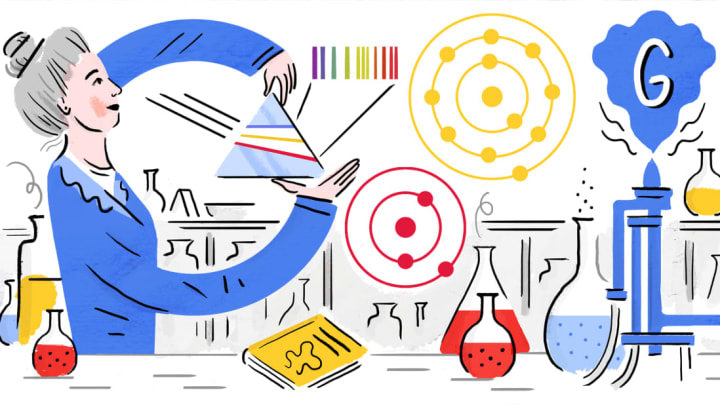If you want to learn about underappreciated figures in science, politics, and the arts, keep tabs on the latest Google Doodles. Today, April 5, Google is celebrating what would have been the 132nd birthday of Hedwig Kohn with a Doodle honoring the barrier-breaking physicist.
Born in 1887 in Breslau (modern-day Wrocław, Poland), Kohn obtained her doctorate in physics in 1913, just five years after women in her country were officially allowed to pursue higher education. She made history by earning her credential to teach physics at a German university, something only two other women (Lise Meitner and Hertha Sponer) were certified to do before World War II.
Hedwig Kohn wasn't just notable for blazing trails for women in physics. She was also a Jewish woman living in Nazi Germany, and in 1933, she lost her university teaching position because she was Jewish. After working on research contracts for a few years, she immigrated to the U.S. in 1940 to escape Nazi persecution and find steady work.
In America, Kohn continued to share her passion for physics with students. She taught at the Woman’s College of the University of North Carolina and Wellesley College in Massachusetts. After retiring from teaching in 1952, she accepted a research associate position at Duke and did work on flame spectronomy. At the time of her death in 1964, Hedwig Kohn's research had led to more than 20 publications, one patent, and several textbook chapters on radiometry. Following World War II, the German government had awarded her with a pension and the title of professor emerita.
Hedwig Kohn paved the way for many female scientists to change the world in the past century. Here are just some of the women from recent history who made an impact in their scientific fields.
Read up on the subjects of some of Google's previous Doodles here.
